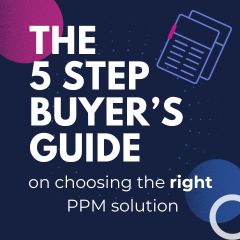Established in 1923, Trumpf began as a cluster of mechanical workshops, evolving into a global leader in machine tools, laser technology, and industrial electronics. Over the century, Trumpf has exemplified adaptability and a fearless approach to change. This is evident not only in their technological advancements, including laser technology and EUV (extreme ultraviolet) microchips, but also in their innovative project management strategies.
Simon Trautwein, a Business Partner controlling the R&D function, managing two business centers, and overseeing Portfolio and Governance (Also known as the Project Management Office (PMO) at Trumpf, shares insights in an interview on how Planisware emerged to be more than a tool, but a true partner in monitoring and managing diverse projects across various technological sectors. Trautwein mentions at the beginning the concept of "Smart Factories" which means the integration of advanced technologies across all areas of manufacturing, aimed to enhance efficiency and productivity. These factories utilize AI, IoT, and robotics, creating a highly digitized and interconnected production environment. Nevertheless, before the implementation of Planisware, managing these complex, horizontally integrated technological fields within the production line was a significant challenge for Trumpf.
Planisware: More than a Solution
For Trumpf, Planisware became more than a project and portfolio management (PPM) tool; it allowed to fully integrate multiple projects across different technology domains. As previously mentioned, Trautwein noted that Trumpf's business centers aren't solely divided by technologies like laser, bending, and welding. They also encompass horizontal divisions, such as services and software solutions for programming and factory control. Consequently, Planisware offered a comprehensive overview of the company's projects. This fostered cross-company transparency and streamlined resource management, addressing a common challenge in complex organizations.
Trumpf focused on resource management as a priority, as understanding how each project depends on each other and which resources are needed was an important objective. The tool facilitated project prioritization and efficient resource allocation, enhancing project pace and visibility through hard data and facts, and not by intuition and assumptions, thereby ensuring full transparency of the portfolio.
Planisware successfully maintained key aspects we aimed to model within the tool. This involved maintaining underlying strategic governance, clear prioritization logic, and managing generic resources. "What makes me proud," says Simon Trautwein, "is that even after four years, the foundational concept remains unchanged. Planisware adeptly supported these adaptations.
Having witnessed the benefits in one department, Trumpf confidently expanded the use of Planisware to other areas like IT and the operational excellence office, as well as to its fully integrated entity, "Trumpf Austria," focusing on machine tools. Looking ahead, Trautwein envisions incorporating elements like risk management and status reporting into Planisware incrementally. This success exemplifies how the versatility of Planisware, coupled with Trumpf's commitment to a cohesive project management strategy, can lead to a unified solution across various departments.
No doubt, Trumpf's experience with Planisware shows how a PPM solution can revolutionize project management in a technologically diverse organization. Trautwein stresses that while Planisware is adaptable, its implementation is not a simple plug-and-play process. Proper training and user guidance are essential for using it to its fullest capabilities – something any organization adopting Planisware in the future would want to do. Recognizing this, Planisware offered comprehensive training from in-house experts throughout and beyond the implementation phase. Interested in how Planisware can benefit your organization? Connect with our experts here.

